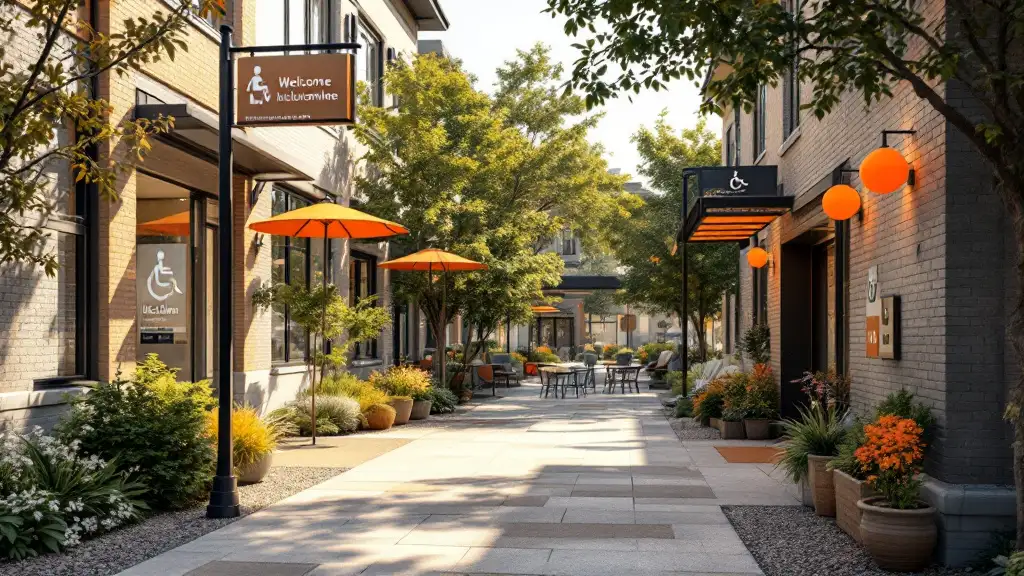Building Inclusive Celebrations: Strategies for Autism-Friendly Events
Understanding the Foundations of Neurodiversity in Event Planning
In an increasingly diverse society, recognizing and accommodating neurodiversity is vital for creating inclusive events that resonate with all attendees. Neurodiversity encompasses a range of neurological differences, including autism spectrum disorder (ASD), ADHD, dyslexia, and Tourette syndrome. These variations impact how individuals think, process information, and interact within social environments. Given that approximately 20% of the global population is neurodiverse, event organizers must consider strategies that foster an accessible and welcoming atmosphere. This article explores the importance of neurodiversity in event planning, effective practices for inclusion, legal obligations, environmental design, technological tools, and resources that support event professionals in delivering autism-friendly experiences.
Defining Neurodiversity and Its Significance in Events
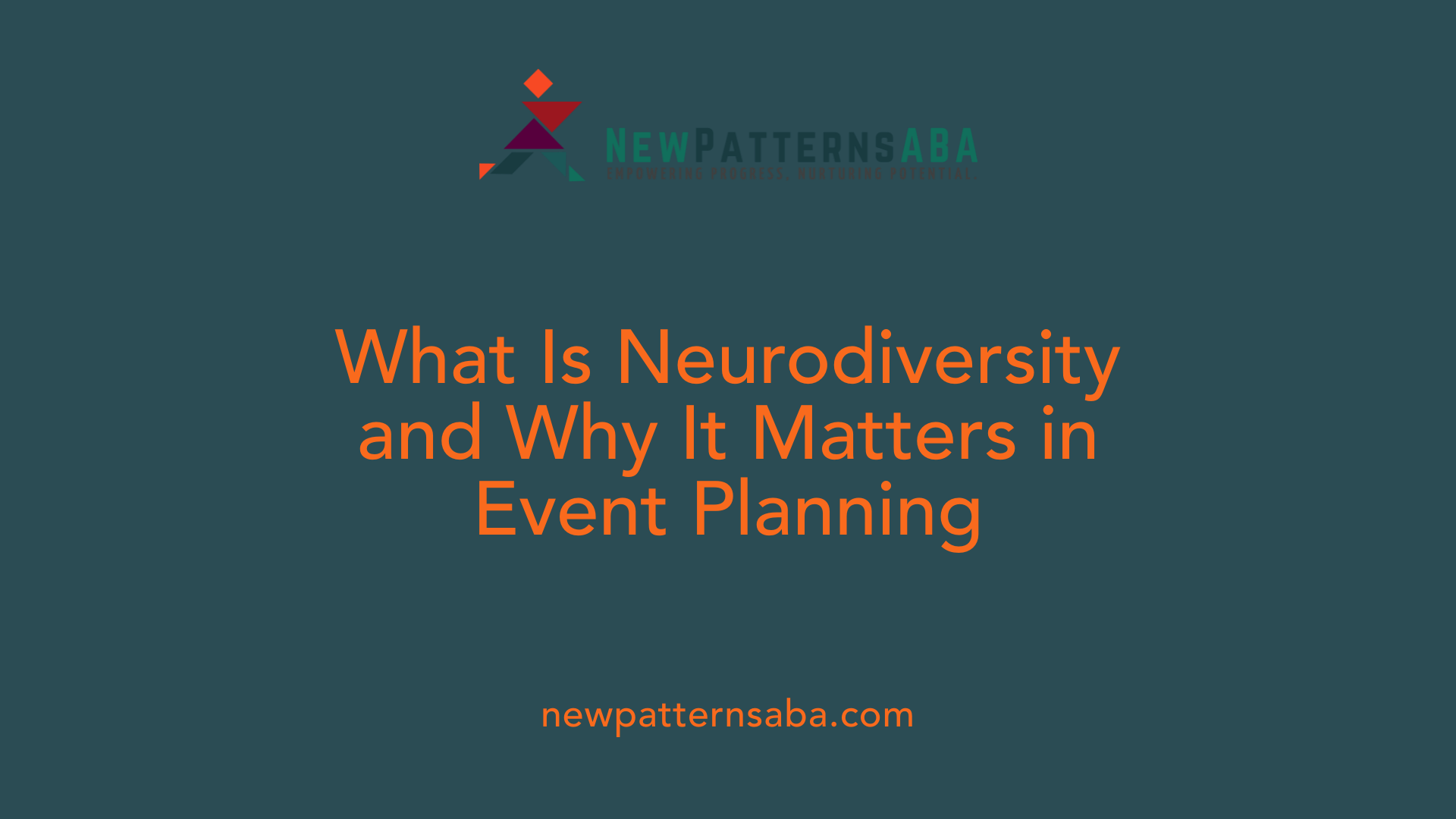
What is neurodiversity?
Neurodiversity describes the natural variation in how human brains function and process information. It encompasses a range of neurological differences, such as autism spectrum disorder (ASD), ADHD, dyslexia, and Tourette syndrome. These conditions reflect diverse ways that individuals think, learn, and behave.
Why is it important in the context of event planning?
Incorporating neurodiversity into event planning is vital for fostering an inclusive environment where everyone can participate comfortably. About 20% of the global population is considered neurodiverse, meaning they may experience sensory sensitivities, differences in communication, or unique processing needs. When events adapt to accommodate these differences through sensory-friendly spaces, clear communication, and flexible scheduling, they become more accessible and welcoming.
Creating neurodiverse-friendly events benefits not only those with neurological differences but also enhances the experience for all attendees. It cultivates a culture of acceptance and understanding, encourages diverse perspectives, and supports community engagement.
Demographic data on neurodiverse populations
Research indicates that nearly 1 in 5 people worldwide is neurodiverse. This high prevalence highlights the importance of including neurodiversity considerations in event planning. Despite this, many neurodiverse individuals opt out of events due to sensory overloads, overwhelming environments, or lack of accommodations. Addressing these challenges through proactive planning demonstrates social responsibility and expands opportunities for participation.
In summary, integrating neurodiversity into event design ensures equitable access, promotes social inclusion, and enriches the event experience for everyone involved.
Strategic Planning for Neuroinclusive Events
Early planning and community engagement
Successful neuroinclusive events begin with early planning that actively involves neurodiverse individuals and advocacy groups. Engaging with the neurodiverse community during the initial stages helps organizers understand specific needs and preferences. Conducting surveys and focus groups can uncover what accommodations are most effective, such as preferred sensory environments or schedule flexibility. This inclusion not only improves accessibility but also demonstrates respect and commitment to diversity.
Involving neurodiverse individuals in the planning process
Involving people with neurodivergent conditions early in the planning process ensures that their insights shape the event's design. Their feedback on sensory sensitivities, communication styles, and preferred accommodations is invaluable. For example, they can advise on quiet zones, sensory kits, and the use of visuals or simple language in signage. Collaborating with neurodiverse advocates results in a more welcoming environment where attendees feel understood and accommodated.
Training staff on neurodiversity awareness
A critical component of effective neuroinclusion is staff training. Educating team members about various neurodivergent conditions, such as autism, ADHD, and dyslexia, prepares them to offer respectful assistance. Training programs often include certification courses like those from the Certified Autism Center and sessions on sensory sensitivities and communication strategies. Equipped staff can better support attendees, respond appropriately to sensory overloads, and create a positive, inclusive atmosphere.
| Strategy | Description | Benefits |
|---|---|---|
| Sensory-friendly environments | Quiet zones, adjustable lighting, sensory tools | Reduce overwhelm, increase comfort |
| Clear communication | High-contrast signage, pre-event info, visuals | Minimize anxiety, improve understanding |
| Flexible scheduling | Breaks, recording options, virtual participation | Enhance engagement and comfort |
| Community involvement | Consultations with neurodiverse groups | Tailored accommodations, trust-building |
| Staff training | Neurodiversity awareness courses and certifications | Better support, respectful interactions |
Developing an inclusive event requires a thoughtful approach that integrates these practices. When organizers plan early, collaborate with the community, and educate staff, they create spaces where neurodiverse participants can thrive. Such strategies not only benefit those with neurological differences but enrich the experience for all attendees—demonstrating a true commitment to diversity and inclusion.
Legal Frameworks and Compliance
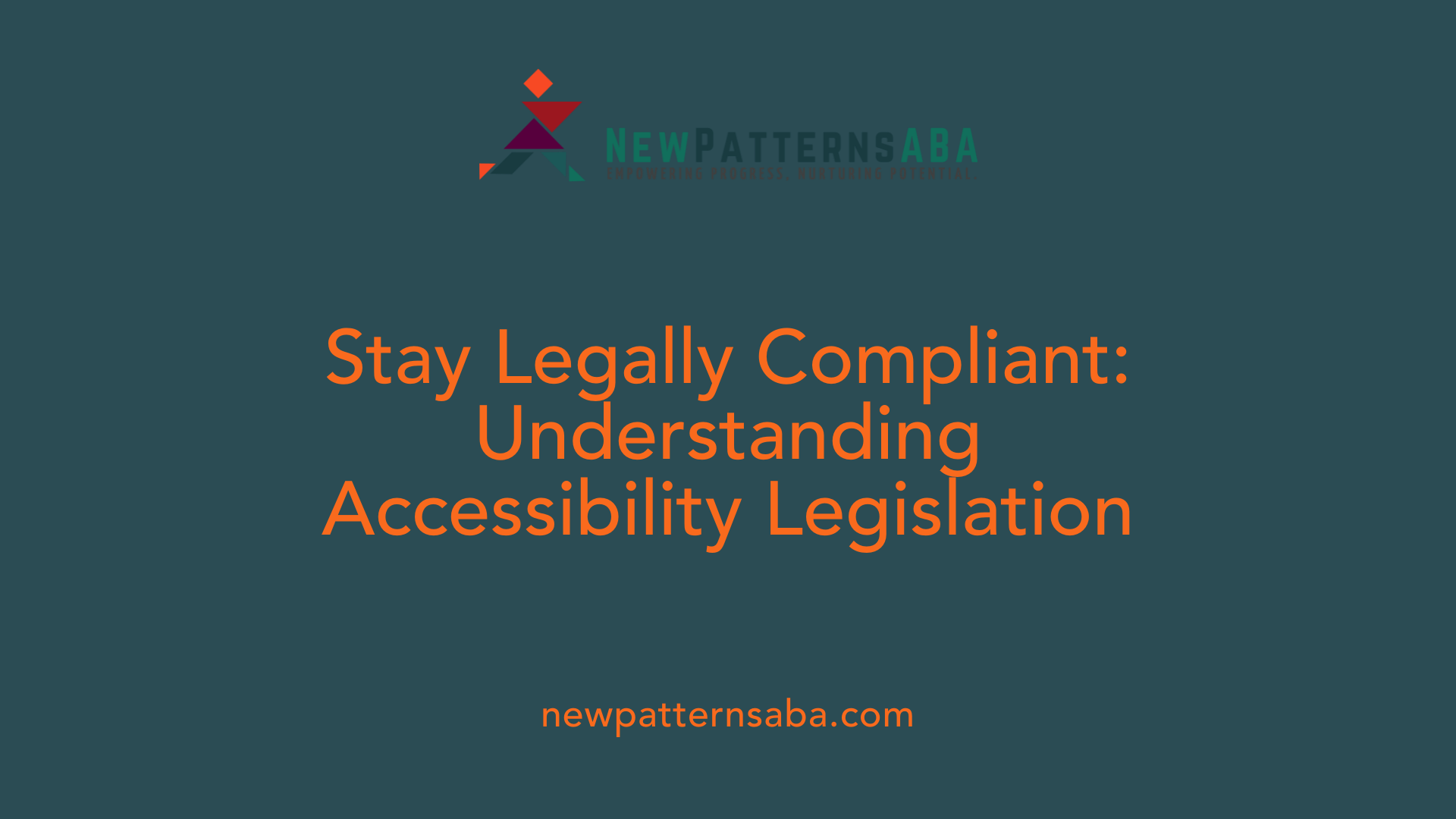
Are there legal requirements for making events accessible to neurodiverse individuals?
Yes, various laws across countries set legal standards to ensure events are accessible for neurodiverse individuals. These regulations are part of broader disability and anti-discrimination policies.
In the United States, the Americans with Disabilities Act (ADA) requires public events and venues to provide accessible design features. This includes physical accommodations like ramps and elevators, as well as effective communication options such as captioning and sign language interpreters. The ADA ensures that neurodivergent individuals can participate equally and comfortably.
In the UK, the Equality Act 2010 explicitly prohibits discrimination based on disability, including neurodiverse conditions like autism and ADHD. Organizers are expected to make reasonable adjustments—such as sensory-friendly spaces, flexible scheduling, and clear signage—to accommodate these needs.
Looking ahead, the European Accessibility Act, which becomes effective in June 2025, emphasizes digital accessibility standards for events. It requires that online components, such as registration websites and virtual event platforms, comply with the WCAG 2.2 guidelines. This ensures equitable online access for neurodiverse participants.
Overall, these laws place a legal obligation on event organizers to consider and implement accommodations that address sensory, physical, and cognitive differences. Doing so not only complies with regulations but also promotes social inclusion and equal participation.
| Regulation | Scope | Specific Requirements | Impact on Neurodiverse Participants |
|---|---|---|---|
| ADA (US) | Public venues, events | Physical accessibility, communication accommodations | Ensures physical access and effective communication |
| Equality Act (UK) | All public and private sectors | Reasonable adjustments for disabilities | Promotes tailored adjustments like sensory spaces |
| European Accessibility Act | Digital services, online event components | WCAG 2.2 compliance | Ensures online accessibility, reducing digital barriers |
Understanding these frameworks highlights the importance of integrating accessibility from planning stages, ensuring legal compliance and fostering inclusive experiences for all attendees.
Designing Inclusive Event Spaces with Sensory Considerations
What design considerations can improve inclusivity and sensory experiences in event spaces?
Creating spaces that are welcoming and accessible for everyone involves thoughtful design features focused on sensory needs. Incorporating sensory-friendly zones, such as quiet areas where attendees can retreat and relax, is essential. These zones should have adjustable lighting and sound conditions, providing a calming environment for neurodiverse individuals or those experiencing sensory overload.
Lighting and sound adjustments are critical. Using dimmable lights, avoiding flashing or strobe effects, and implementing soundproof panels can significantly reduce sensory triggers. Offering noise-canceling headphones, soft lighting options, and visual schedules helps attendees manage their sensory input comfortably.
Providing accommodations like sensory kits, which may include noise-canceling headphones, fidget toys, sunglasses, and calming visuals, supports neurodiverse participants in managing sensory sensitivities. Clear signage, visual aids, and communication tools, including captions and simplified content, promote understanding and engagement.
Flexible event structures also contribute to inclusivity. Scheduling regular breaks, shorter sessions, and providing recorded content enable attendees to participate without becoming overwhelmed. Leveraging technology, such as virtual or augmented reality environments, and interactive maps with AR wayfinding, helps guests navigate spaces efficiently.
Importantly, designing inclusive spaces requires engaging with neurodiverse communities and gathering ongoing feedback. This collaborative approach, along with cultural sensitivity and diverse input, ensures the environment is welcoming for all. When these elements are combined, event spaces become inclusive, sensory-friendly environments where everyone can participate comfortably and confidently.
Leveraging Technology to Enhance Accessibility
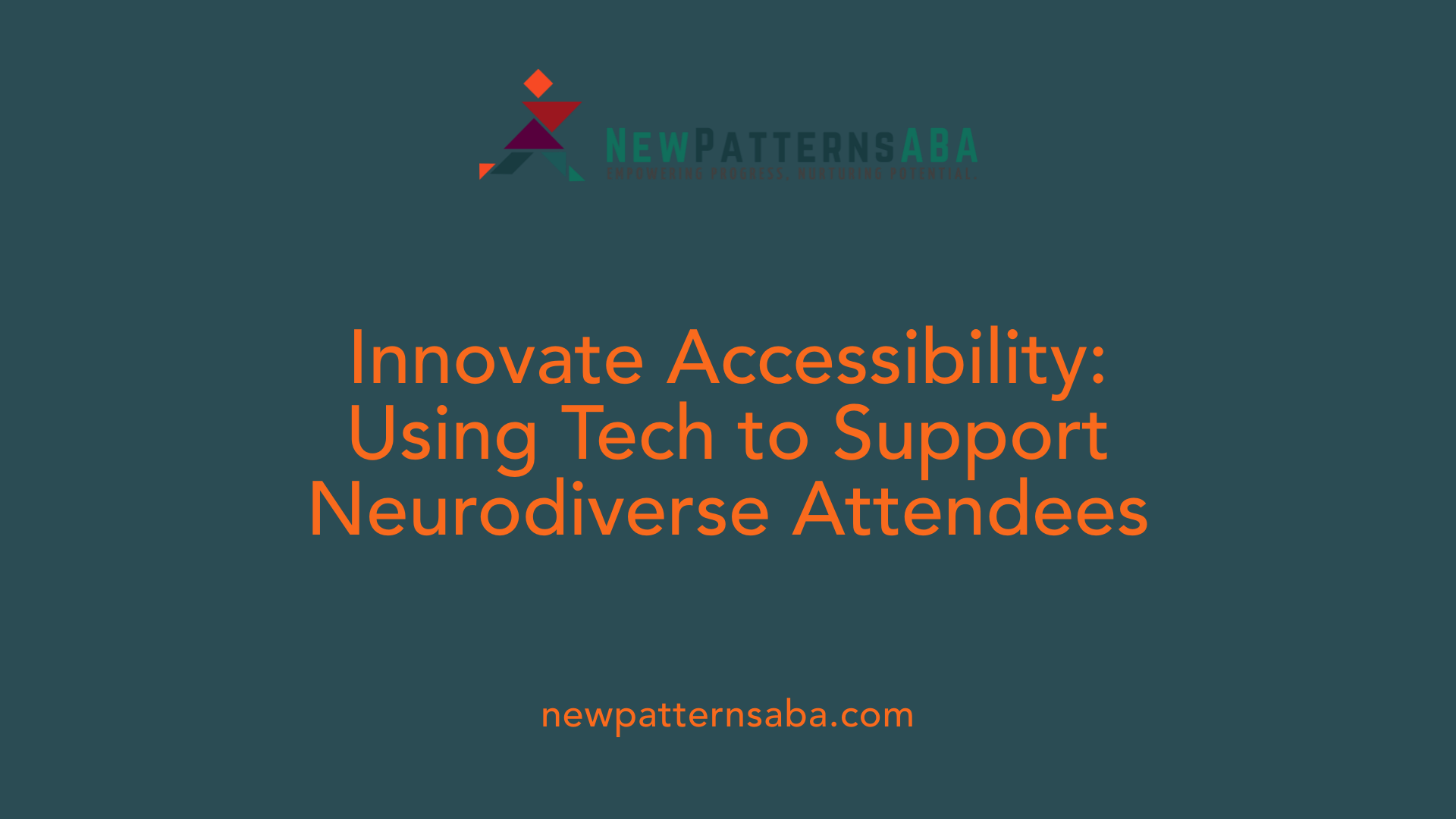
How can event organizers accommodate individuals with autism and other disabilities?
Event organizers today have a growing toolkit of technological solutions to improve accessibility for individuals with autism and other disabilities. By integrating these tools into the planning and execution of events, organizers can create more inclusive experiences.
One effective approach involves virtual reality (VR) and augmented reality (AR). These immersive technologies allow participants to explore event spaces remotely before attending, helping them familiarize themselves with the environment and reduce anxiety. For example, a virtual walkthrough can show sensory-friendly areas, accessible entrances, and quiet zones, giving neurodiverse attendees a preview that eases their transition into the physical space.
Accessibility apps and platforms also play a crucial role. These digital tools can provide real-time navigation, assist with communication, and offer personalized support features. Interactive maps accessible via smartphones or tablets enable attendees to find restrooms, exits, and sensory rooms easily. Some platforms incorporate features like visual schedules, social narratives, and communication aids, supporting neurodiverse individuals in understanding and navigating the event.
Real-time navigation and communication tools are essential for ongoing support during the event. Apps with live captioning, sign language interpretation streaming, or text-to-speech functions ensure that attendees with hearing impairments or communication challenges stay connected. Messaging platforms or digital concierge services can facilitate quick assistance and provide updates or changes in event schedules.
By leveraging these technologies, event organizers can foster an environment that respects diverse needs. Advanced planning that includes virtual tours, tailored apps, and real-time support not only enhances accessibility but also signals a genuine commitment to inclusion. Such innovations transform traditional event experiences into welcoming, adaptable, and equitable spaces for everyone, including individuals with autism and other disabilities.
Utilizing technological solutions in event planning aligns with legislation like the UK Equality Act 2010 and the US ADA, which emphasize accessible design. As technology continues to evolve, so do opportunities for creating more universally accessible and engaging event experiences, benefiting all participants and demonstrating social responsibility.
The Role of Feedback and Continuous Improvement

How can event planning awareness be improved regarding autism accessibility and neurodiversity?
Enhancing awareness among event planners about autism and neurodiversity begins with education. Implementing comprehensive training programs that focus on various neurological conditions and their specific needs equips planners with the knowledge to create inclusive environments.
Incorporating educational campaigns and leveraging digital tools, such as accessible websites and apps that adhere to WCAG 2.2 standards, also plays a vital role. Collaboration with neurodiversity advocacy groups can provide valuable insights, ensuring that planning considers sensory sensitivities, quiet zones, and flexible accommodations from the very beginning.
Sharing best practices, checklists, and real-world case studies through industry networks or professional development platforms boosts confidence and competence. These resources can guide event teams toward designing sensory-friendly spaces, offering clear communication, and planning flexible schedules.
Furthermore, continuous feedback from neurodiverse attendees is essential. Multiple channels—including surveys, interviews, and live feedback during events—help organizers understand what works well and what needs adjustment. This ongoing dialogue fosters an environment of learning and adaptation.
By engaging in this cycle of education, implementation, and feedback, event organizers can cultivate a deeper awareness and commitment to neurodiversity inclusivity, ultimately creating more welcoming and accessible experiences for all participants.
Creating an Inclusive Atmosphere and Fostering Community Engagement
How can event organizers accommodate individuals with autism and other disabilities?
To create truly inclusive events, organizers must adopt comprehensive strategies that address physical, sensory, and cognitive needs. Physical accommodations include ensuring venues are accessible through ramps, elevators, wide doorways, and accessible restrooms. Sensory-friendly features such as quiet zones, adjustable lighting, and sensory kits—containing noise-canceling headphones, fidget tools, and calming visuals—are essential for neurodiverse attendees.
Cognitive supports like clear visual schedules, social narratives, and accessible signage help participants navigate the event smoothly. Communication should be straightforward, using simple language and visual aids, with information shared well in advance to reduce anxiety. Providing alternative formats for materials, such as large print or digital versions, ensures content is accessible to everyone.
Staff training plays a vital role. Organizers should ensure staff are familiar with neurodiversity awareness and able to support diverse needs effectively. Specialized guides or autism awareness certifications, like the Certified Autism Center certification, can enhance staff preparedness.
Virtual participation options, including livestreams and virtual reality experiences, enable individuals who may find in-person environments overwhelming to join comfortably. Offering flexible scheduling, such as scheduled breaks and resilience spaces, further supports neurodiverse attendees.
Close collaboration with advocacy groups and sensitivity to individual preferences foster a respectful, predictable environment. These efforts demonstrate a commitment to accessibility and make events more welcoming for everyone, regardless of their abilities.
The Benefits of Neuroinclusion for Broader Event Impacts
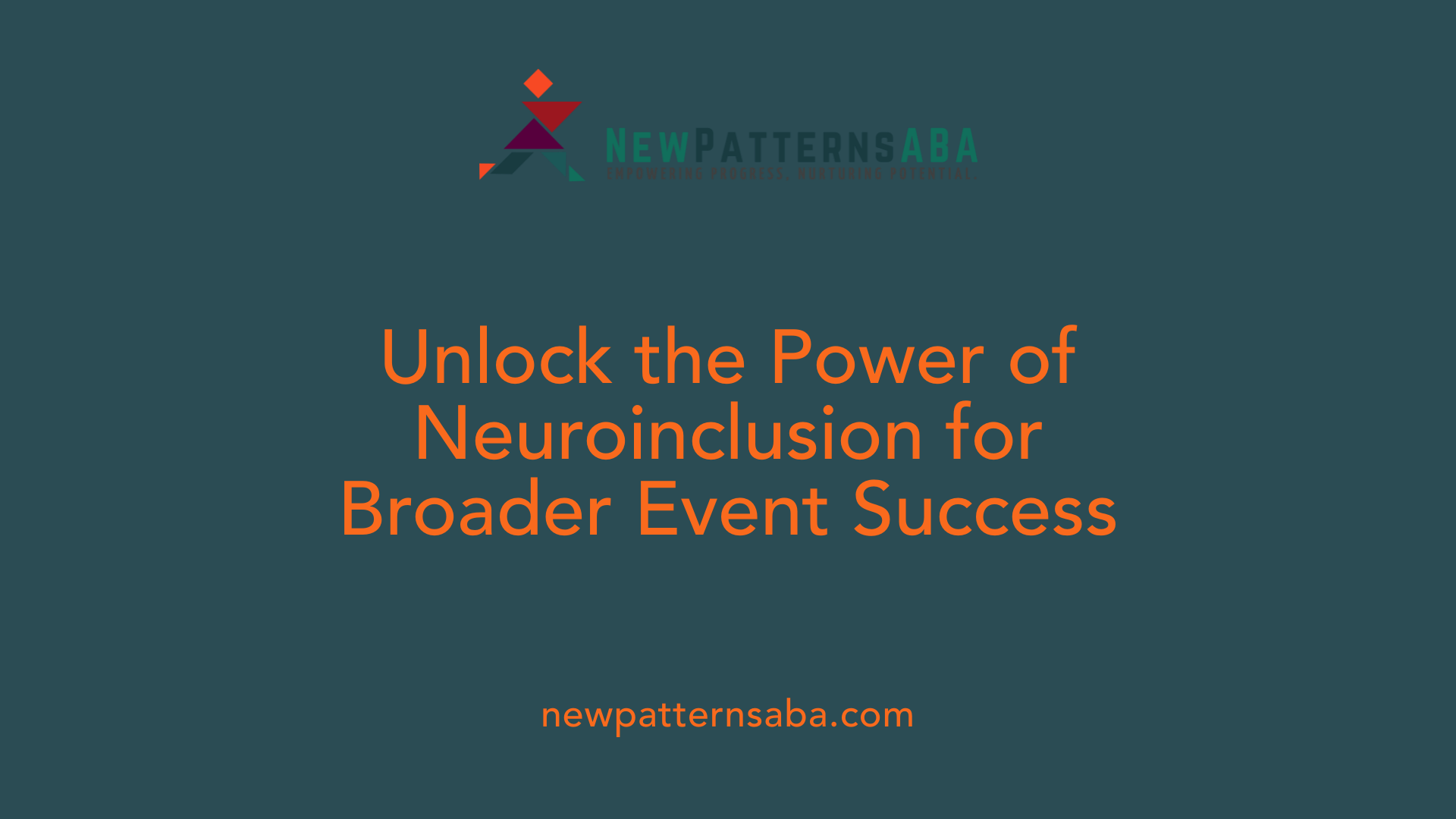
Why is accessibility and inclusion vital in event planning?
Accessibility and inclusion are fundamental components of successful event planning because they open doors for everyone to participate fully. When events are designed with diverse needs in mind—such as sensory accommodations for neurodiverse individuals or physical support for those with mobility challenges—they become more welcoming and equitable.
By adopting neurodiverse-friendly practices like quiet zones, clear communication, and flexible scheduling, event organizers can broaden their audience. This not only enhances community engagement but also demonstrates social responsibility. Inclusive events show respect for differences, foster a sense of belonging, and promote positive reputation among attendees and stakeholders.
In addition, integrating innovative and adaptable features—such as sensory-friendly environments or assistive technologies—can set new standards in event design. This approach benefits all participants by creating a more comfortable and engaging experience.
From a business perspective, prioritizing accessibility aligns with legal obligations like the UK Equality Act and the US ADA, while also giving organizations a competitive edge. Such commitment demonstrates ethical leadership and enhances brand image, signaling a dedication to diversity and societal progress.
In essence, accessible and inclusive events are more than just compliant—they are transformative opportunities. They stimulate creativity, foster social cohesion, and achieve broader societal impacts. Ultimately, embracing neuroinclusion helps organizations create memorable, equitable experiences that resonate with diverse audiences and reflect a forward-thinking, responsible ethos.
Enhancing Event Accessibility Through Continued Effort
Creating events that embrace neurodiversity isn't a one-time effort but a continual journey of learning, adapting, and growing. By integrating legal requirements, leveraging innovative technologies, training staff, and actively seeking feedback, event organizers can significantly improve accessibility and inclusivity. Building sensory-friendly environments, designing accessible spaces, and fostering respectful communication cultivate a community where everyone feels valued. The benefits extend beyond compliance—they enhance social impact, strengthen brand reputation, and lead to richer, more diverse experiences. Ultimately, commitment to neuroinclusion enriches the social fabric, business resilience, and societal understanding, paving the way for truly inclusive celebrations.
References
- Inclusive Event Planning: Bridging the Accessibility Gap
- Event Planning for Accessibility: Tips and Best Practices
- Creating Accessible Events Toolkit
- 13 tips to improve neurodiversity at your event
- Tips for Creating Inclusive and Accessible ...
- Top Tips for Planning Inclusive Events: An Accessibility ...
- Consider Neurodiversity When Planning Your Next Event
- Neuroinclusion: Events for Everyone - Smart Meetings

